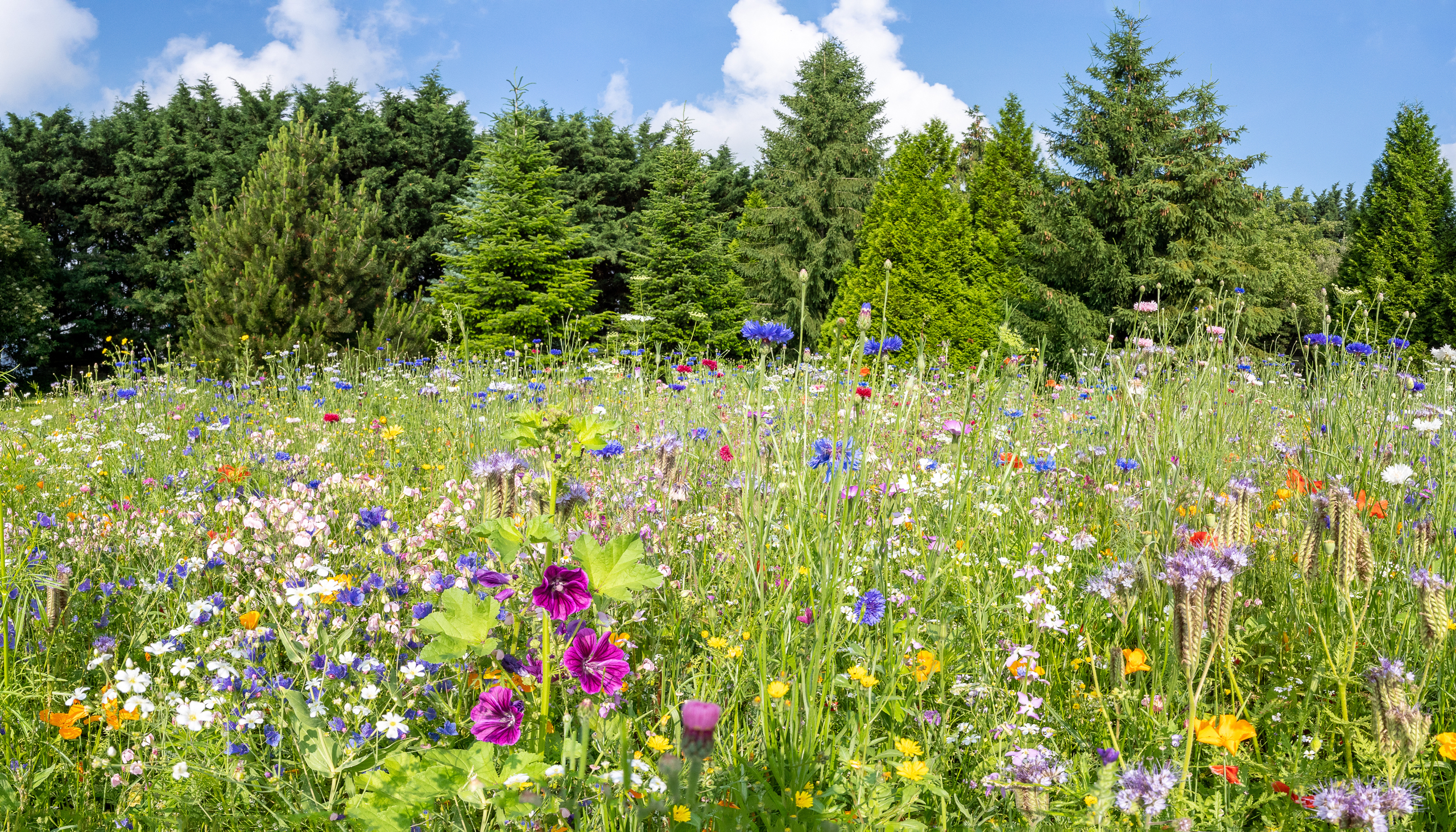
In the quest for a more sustainable and ecologically approach to golf course management, wildflower meadows are emerging as a great tool for biodiversity. These vibrant, flower-filled spaces are not only visually stunning but also play a crucial role in supporting local ecosystems. As golf courses in the UK seek to balance the demands of the game with a commitment to sustainability, wildlife meadows offer a practical and impactful solution.
It’s estimated that on average an 18-hole golf course takes up 111 acres. This is quite a significant amount of space, meaning there could be a great opportunity for golf courses to implement wildlife meadows across their site.
But what are the benefits of introducing wildlife meadows and what role can they play on a golf course?

The Benefits of Wildflower Meadows
Vital for Biodiversity
A single healthy wildlife meadow can be a bustling hub of life, home to over 100 species of wildflowers. These diverse plant communities create robust ecosystems that support an array of meadow wildlife, including insects, birds, and small mammals. By fostering such biodiversity, golf courses can become important refuges for wildlife, contributing significantly to local and regional ecological health.
Providing Food for Pollinators
Wildflowers offer continuous supply of food for bees, butterflies, and other pollinators throughout the year. On a single day in summer, one acre of wildflower meadow can host approximately 3 million flowers, producing 1kg of nectar sugar. This is enough to support nearly 96,000 honeybees per day. By nurturing these pollinator populations, we not only help sustain local agriculture and gardens but also bolster the overall health of our environment.
Helping with Flooding
Established wildflower meadows possess intricate root systems that stabilise the soil and enhance its structure. These roots allow the soil to absorb and hold onto rainwater more effectively, reducing surface runoff and mitigating risk of flooding. Additionally, by preventing the washout of nutrients, these meadows help maintain soil fertility and promote healthier plant growth across the landscape.
Fighting Climate Change
Grassland soils have a remarkable ability to sequester carbon, rivalling the carbon storage capabilities of woodlands. By capturing and storing carbon dioxide from the atmosphere, these meadows help reduce greenhouse gases, making a positive impact on our efforts to combat climate change. Moreover, their natural resilience and low maintenance make them an environmentally friendly option for land management.
Benefits for Golf Courses
Reduced Maintenance and Costs
One of the most significant benefits of integrating wildflower meadows into golf course is the reduction in maintenance. Traditional areas that aren’t being used around the golf course, can be . Once established, they can be largely left to grow naturally, needing only occasionally mowing or management to maintain their health and prevent the encroachment of invasive species. This not only cuts down on labour and equipment costs but also allows greenkeeping teams to focus their efforts on other critical areas of the course.
Mitigate Flooding
Flooding can be a significant issue for golf courses, especially the UK, due to disrupting play and causing extensive damage to fairways and greens. Wildlife meadows help mitigate this problem through their root systems, which stabilise soil and enhance its capacity to absorb and retain water. During heavy rain, these meadows act like natural sponges, holding onto rainwater and reducing surface runoff.
Enhancing Wildlife
Wildlife meadows provide a haven for a diverse range of species; by fostering such biodiversity on golf courses they can become important refuges for local wildlife. This not only enhances the ecological value of the course but also creates opportunities for golfers and visitors to engage with nature. Seeing butterflies between flowers, hearing birds sing, or spotting rabbits darting into meadows can enrich the golfing experience and deepens the connection between players and the environment.
Improving Aesthetics
In addition to their practical benefits, wildlife meadows can significantly enhance the visual appeal of a golf course. The vibrant colours and varying textures of wildflowers and grasses create a stunning contrast to the manicured greens and fairways. These natural areas add depth and character to the landscape, providing beautiful vistas and serene spots that golfers can enjoy as they play. The presence of wildlife meadows can make a course more inviting and memorable, contributing to a positive reputation.
Integrating wildlife meadows into golf courses presents a compelling opportunity to enhance sustainability and ecological health while also reaping numerous practical benefits. These vibrant and biodiverse areas not only reduce maintenance costs and mitigate flooding but also provide crucial habitats for local wildlife and improve the overall aesthetics of the course. As golf courses in the UK and beyond strive to balance the demands of the game with environmental responsibility, wildlife meadows offer a win-win solution that supports both nature and the golfing experience. By embracing this approach, golf courses can become leaders in sustainability, showcasing their commitment to preserving the environment for future generations while providing a more enjoyable and visually stunning experience for golfers.
Sources: